Fiber switches play an essential role in the architecture of the latest virtual data networks, providing high capacities, better network operability, and excellent dependability. With the need for larger bandwidth and rapid data transmission speed, both Ethernet and fiber optic networks have grown to be a necessity. Small and medium enterprises that use Ethernet networks that depend on copper wires for transmission can have good connections but at lower speeds. Fiber optic networks, on the other hand, send data through thin plastic or glass wires and use light to achieve higher speeds with lower delays. This guide examines the key features, benefits, and use cases of these networks while also presenting fiber optic switches as essential tools in realizing the full potential of Ethernet networks in fiber optics technology. Once the integration of fiber switches is understood, businesses can implement solutions that leverage the best of two worlds and enhanced architecture.
What is a Fiber Switch, and How Does It Work?
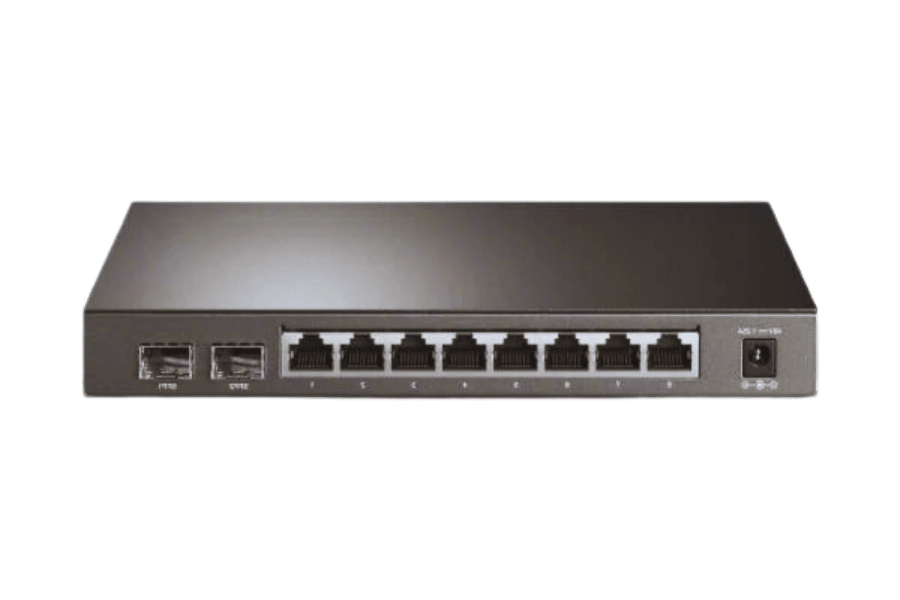
Let’s first take a look at what a fiber switch is. That being said, a fiber switch refers to a device that helps to manage the flow of data over fiber optic connections. Owing to the fundamental functionality of these types of switches, they operate on the principles of receiving, managing, and transmitting – data traffic that has been sent and is to be sent via the fiber optic cables. Fiber switches employ a variety of switching methods and protocols in order to increase data transmission speed, reduce the effect of latency, and preserve the quality of the signal over distance. These switches are very important in improving the efficiency of the network owing to their characteristics of being able to withstand high volumes of data traffic.
Understanding the Basics of Switch Technology
Much of modern networking today is made possible by switching technology that allows for the routing of data packets between devices in a local area network (LAN) through gigabit fiber connections. In its simplest form, a switch receives data packets, gets the destination address, and sends the packets to that device. This is done through a MAC address lookup in the MAC address tables maintained by the switch, which is used to identify the port of the destination to which the data should be sent. Nevertheless, different types of switching mechanisms, such as store-and-forward, cut-through or fragment-free sufficiency, were developed to balance the performance of switches with the needs of the networks they serve. Types of switches include unmanaged ones that are basically cost-effective to manage ones that are costly but have more complex features tailored to different networking scenarios.
The Role of Fiber Optic in Networking
Fiber optic technology has become essential in networking because it can send data over long distances quickly and with little loss. Cable systems based on glass or plastic fibers bundled together in a cable and transmitting data in the form of light are called fiber optic cables. Such data transmission has more benefits over using standard copper cables, such as greater bandwidth capacity, resistance to electromagnetic interference, and improved security. These qualities make fiber optics particularly suitable for backbone networks, data centers, and high–performance computing environments where rapid and reliable data transfer and internal communication are critical. With fiber optic networks, high efficiency, and scalability are achieved to meet the ever-increasing data requirement in the connected world.
Critical Differences Between Managed and Unmanaged Switches
Managed and unmanaged switches vary mainly with respect to their degree of control customization and price. Managed switches have more sophisticated features like VLANs, network management, and traffic control, which makes it easier to customize and configure to fit the needs of the network. They have sockets for making configuration changes, which is important for large or more complicated systems with high-security requirements and performance enhancement requirements. On the other hand, unmanaged switches have a primary purpose and require no configuration, thus making it easy to install them and enabling a lower cost. They do work in basic setups where an essential degree of customization is required. Managed switches allow for a good degree of operational flexibility and features for organizations that require many managerial aspects to their networks. In contrast, unmanaged switches provide an uncomplicated approach for cases where the deployment is simple.
How to Choose the Right Fiber Switch for Your Needs?
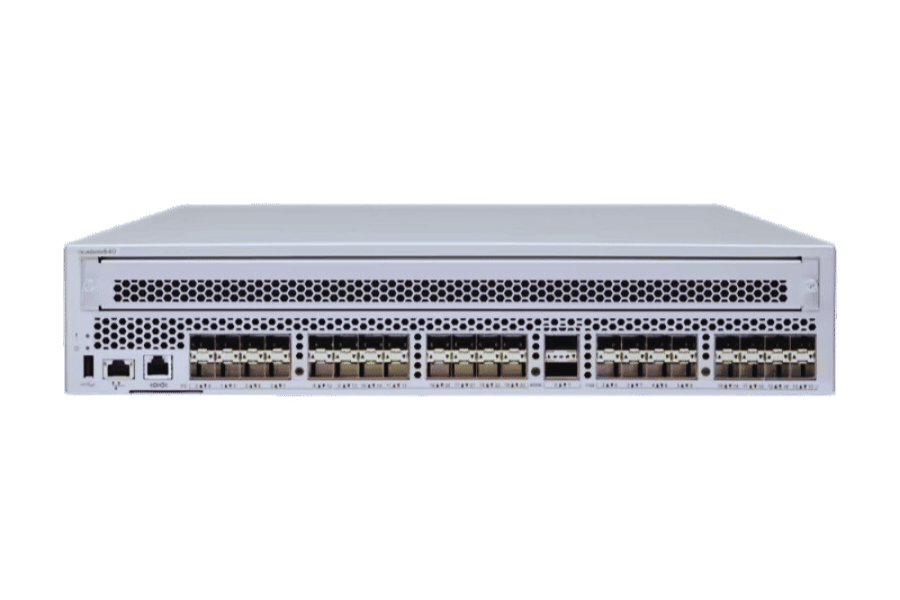
Factors to Consider: Port Count and Speed
The number of ports and speed are crucial factors when choosing which fiber switch fits my needs. The number of ports establishes the number of devices I can plug into the switch, so the specifications should be such that they cover current and future expansion strategies. If I expect any growth of the network or further devices to be connected, it is advisable to get a switch with a high number of ports, like a 4x or 8-port switch. ‘In terms of speed, I will have to determine if the speed requirements are 1 gigabit or 10 gigabits depending on the bandwidth objective of my network. Depending on the amount of throughput, for example, with media streaming and distribution or intensive data transfer, the switch speed makes it possible to achieve proper and fast interaction of devices. All of these factors will influence my decisions and ensure the network meets my performance requirements.’
When to Opt for a Managed Switch?
I would use a managed switch to control my network down to the finer details, especially when in an uplink environment. There is a higher chance that if I need more security within my network structure, such as VLANs and access control lists, a managed switch will suffice within the network architecture. Managed switches come with SNMP support, which I can use to monitor the network environment, especially when there are TP-Link devices, so as to respond to faults when they occur. For high traffic or multiple data streams, managed switches have QoS features that can manage bandwidth allocation ensuring that important applications are catered for. Besides, where it is necessary to scale and optimize the network, a managed switch has more advanced configuration options that allow me to modify the network according to the requirements of the operation.
Understanding SFP and SFP Transceiver Options
SFP and SFP optical transceiver modules are essential networking aspects since they enable fiber optic and copper data transmission connections. This advantage allows upgradability to the network without necessarily changing the current cable or hardware modules. Capable of operating at various data rates, from Fast Ethernet up to 10 Gigabit Ethernet, and single-mode and multimode fiber and copper interconnect types. Relying on SFP transceiver specifications, the selection process should observe compatibility with respective network devices, distance ranges, and data speed requirements. It is possible to augment network interoperability largely with the use of SFP, which provides an effective way of ensuring that networks are scalable and optimized. This is important when using switches with fiber in a make-up of network infrastructures.
Why is Gigabit Ethernet Important in Modern Networks?
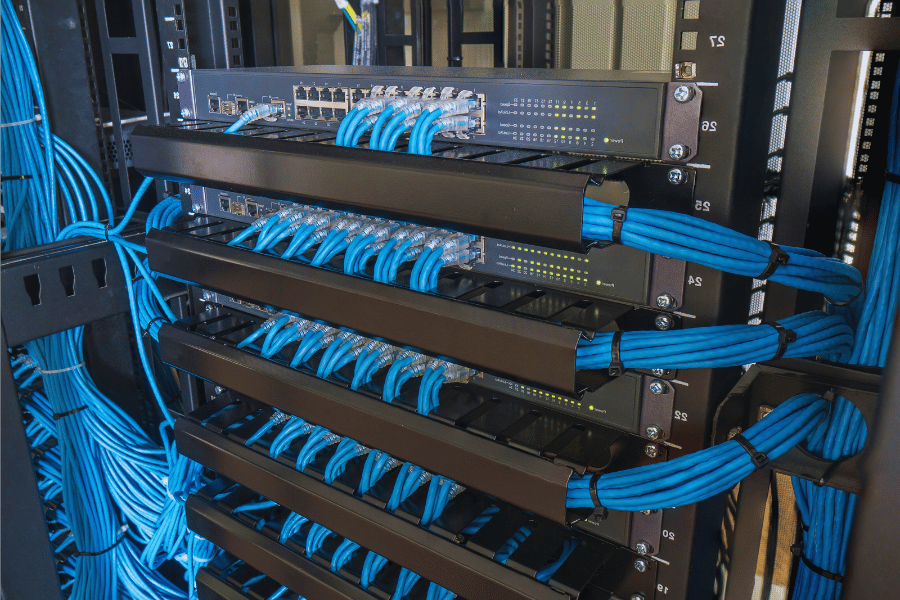
Benefits of Gigabit Over Fast Ethernet
Gigabit Ethernet has various advantages over Fast Ethernet due to its higher data rates. Gigabit Ethernet can deliver up to 1,000 Mbps data rates, while Fast Ethernet only delivers ghosting information at a maximum bandwidth of 100 Mbps. This allows Gigabit Ethernet to cater to the needs of traffic-demanding applications and large data transfers because bottlenecks are minimized and overall network performance is improved. This higher throughput is appropriate for use in scenarios with a high number of concurrent users or large-volume activities such as video conferencing, online gaming, and large online file transfers. Also, Gigabit Ethernet enables better network performance by allowing faster communication between servers and workstations, improving latency and user experience. With the increasing demands of the network, Gigabit Ethernet comes in handy, providing the required scalability and performance in daily business operations.
Integrating Gigabit Ethernet with Fiber Optic Networks
The use of Gigabit Ethernet in conjunction with fiber optic networks has many advantages, including longer distances and less signal loss over a longer distance than that of copper cables. Fiber optics supports the increasing bandwidth requirement of modern networks through high-speed communication. Gigabit Ethernet and fiber optic technologies work well together, providing better efficiency and reliability. In doing so, it is essential to use the correct type of fiber, whether it is single mode or multi mode, along with good quality transceivers for efficient performance and optimal connectivity. It is such integration that acts as a strong base for building scalable network infrastructure with provisions for growth in data in the future.
Leveraging 10G and 10GB Connections
A major enhancement of network infrastructures is the use of 10G and 10GB connections, which help the increasing demand for bandwidth and prepare the network for data growth, particularly when two SFP modules are employed within connections of this kind. These connections allow for high-speed data transfer rates, which are critical for HD video conferencing, complex analytics, and large-scale cloud applications while employing gigabit fiber technology. Enterprises gain low latency and higher throughput by using 10G and 10GB connections, enabling optimal performance in highly demanding environments. Adapting to such speeds requires replacing existing switches and cables with suitable ones for the best quality and efficiency. Given current trends, where organizations keep maximizing data consumption and production, technologies such as 10G and 10GB enable agility and capacity, ideal for staying competitive in the modern world.
How to Set Up and Maintain a Fiber Optic Network?

Installing and Configuring Rack Mount Switches
For an effective rack mount switch configuration and installation, select the rack site that allows proper airflow and accessibility for maintenance requirements. After deciding the rack position, attach the rack switch through the rack ears and screw it, making sure that it is level and steady, mainly when being an 8 port style. After the physical configuration, switch on the switch and connect it to the network via Ethernet or optical connection, depending on the connectivity needs.
For the configuration, use the Console cable and any terminal software to gain the switch’s command line interface, especially on switches with fiber optic capabilities. Configure the system by entering critical parameters such as IP address, subnet mask, and default gateway to allow communication. Set VLANs (Virtual Local Area Networks) to control and distribute the traffic across the network and configure switch port security policies for improved security. Implementing redundancy protocols, such as spanning tree protocol (STP), is also essential to avoid endless network loops while ensuring constant availability. Update the firmware regularly to enhance security and performance. By adhering to these steps, you carry out a smooth switch installation and configuration process which is able to support the rest of the network operations.
Ensuring Proper Connectivity with RJ45 and Fiber Ports
To ensure proper RJ45 and fiber port connectivity, ensure all hardware connections are firm and the wires in use meet the necessary industry standards. For most RJ45 ports used for Ethernet, ensure that the ports accept Cat-5e, 6, or 6a cables that allow compatibility for different speeds. Make it a habit to examine every cable for physical damage, as this can affect signal quality and, thus, network performance.
For fiber ports, choose the type of cable to be used according to the mode, such as single mode or multi mode, depending on the spatial and speed needs of the network deployment. It is very important to use suitable liquid and tools to clean the fiber connectors in order to keep transmission free of particles or impurities, particularly in cases of gigabit fiber. It would be best to properly align and connect the fiber connectors and transceivers to reduce the possibilities of signal loss and interruptions.
Network cables used for RJ45 and fiber should be monitored for link status and performed ‘tested for faults’ from time to time using appropriate network diagnostic tools. There is also network management software that will facilitate continuous monitoring and help to restore the status of connectivity that was lost in the shortest time possible. If you observe all these procedures, you maintain the consistency and efficiency of your network.
Best Practices for VLAN and Layer 2 Management
If VLANs and layer two networks are to be maintained, one must have a systematic procedure to provide the appropriate performance and security. First, the operator should create VLANs that isolate traffic generated by a department or functional desires, increasing the network’s segmentation and minimizing broadcast domains. Creating standard VLAN names and documenting them makes it easier to manage and troubleshoot.
STP Rapid STP or other similar techniques should be deployed to inhibit network loops and maintain the layer two network redundancy. Make regular changes to the configurations and keep these copies safe and ready for use if devices fail or the network has to be altered.
Deploy ACLs and port-security at layer two to ensure no one with the right authority can get access, also deploy VTP across numerous switches to having VLANs more distributed. Utilizing other network management tools to track the utilization and performance of VLANs will ensure blockage or wrong configuration of any kind has been rectified as immediately as possible. Compliance with these suggestions would allow network administrators to improve the management of the business operations, increase security, and optimize the resources available in the organization.
What are the Advantages of Using a Smart Managed Switch?
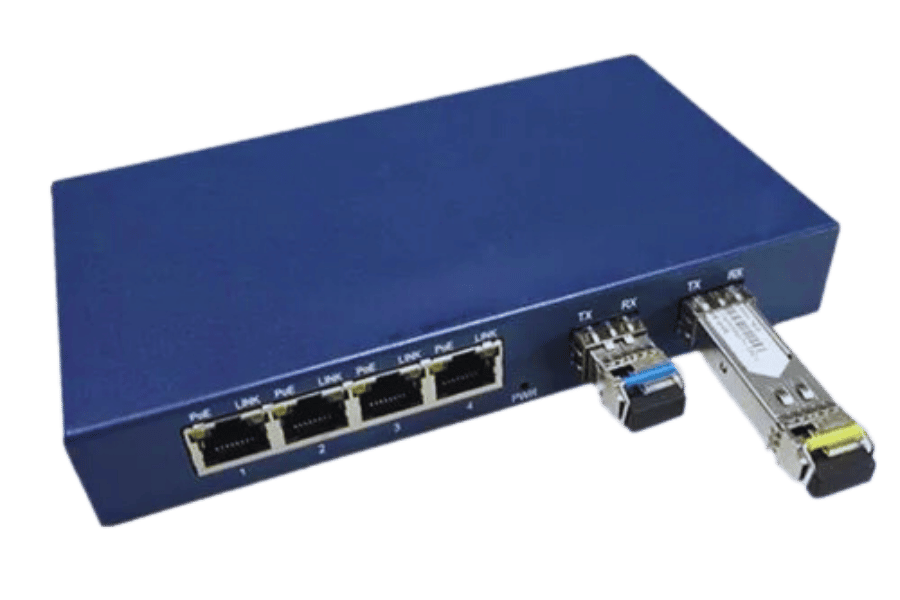
Enhancing Network Performance with Smart Switch Features
Smart managed switches provide advanced features that significantly improve the network’s performance. First, bandwidth can be guaranteed for critical applications via Quality of Service (QoS) settings, which result in traffic prioritization. They also assist in VLAN configuration, facilitating better traffic control and segmentation of the network, thus limiting congestion and enhancing security. Additionally, smart switches include the capability of link aggregation, which enables multiple ports to be combined to increase bandwidth and provide redundancy in networking. Owing to their basic interfaces and management improvements, intelligent switches considerably aid in optimizing network performance and provisioning and monitoring complex networks.
Security Benefits of Managed Ethernet Switch
Managed Ethernet switches provide additional layers of security that are essential in securing the network architecture. Features such as port security and authentication protocols allow the administrator to limit the network to authorized devices only. Managed switches also allow VLANs, which are used to segment a network to limit broadcast domains and protect sensitive information. Furthermore, they also offer extensive network monitoring and logging capabilities that help identify and respond to security threats promptly. These features guarantee a secure and dependable network environment that protects all information from threats and unauthorized access, especially single fiber configurations.
Exploring 8-Port and 5-Port Configurations
While considering the configurations of the 8-port and 5-port switches, evaluating the network needs and form factor expansion requirements is significant. The configuration with eight ports is suitable for mid-sized networks or networks expecting growth in the future. It offers a great number of connectivity points without substantial degradation in performance and effective management of the network. On the other hand, a 5-port switch is more appropriate for small networks or home settings with fewer connected devices. It still provides a straightforward and cost-effective solution that does not add any needless complication. The preference in the choice of any of the configurations is based on the number of devices, network traffic, and the budget available to enhance network design and resource usage to the maximum.
Reference Sources
Frequently Asked Questions (FAQs)
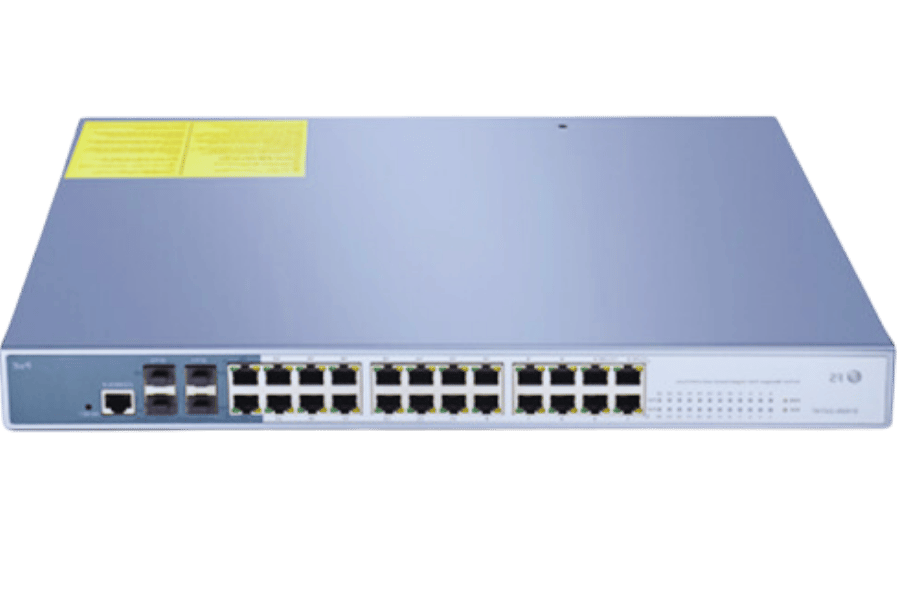
Q: What is a fiber optic switch, and how is it different from the typical Ethernet switch?
A: A fiber optic switch is a switch used in fiber optic communication networks. In contrast, Ethernet switches are regularly designed to support transmission over copper cables. As a result, the fiber optic switch is considered a more brilliant switch because it can transmit more data over longer distances without losing quality. They often have SFP ports, which allow for various connections and are suited to fast fiber networks.
Q: What is PoE (Power over Ethernet), and what does it do with fiber switches?
A: Power over Ethernet (PoE) technology allows data or electrical power to pass through network cables. Unfortunately, fiber optic cables cannot transmit electrical power. However, most fiber switches come with copper ports that support PoE in addition to the fiber ports. This configuration is preferable as it enables the usage of just one Ethernet cable. At the same time, IP cameras or wireless access points receive electricity and a network connection through the switch that has fiber links to the backbone network for high-speed connections.
Q: What SFP slots, what are they, and why do they matter when using fiber switches?
A: Small Form Factor Pluggable (SFP) slots or ports present in quite several fiber switches are also known as SFP ports. They are essential because they enable the switch to interconnect with other devices. SFP slots into switches can accommodate different types of SFP modules, such as single and multimode SFP fiber or even copper SFPs. This allows network managers to reconfigure the switch to meet the requirements of the network environment quickly or to replace it with faster SFPs (1G SFP to 10G SFP), but not the entire SFP switch.
Q: How do managed Ethernet switches differ from unmanaged Ethernet switches?
A: In terms of control and features, managed switches have an edge over unmanaged Ethernet switches: 1. Configuration: Unmanaged switches do not require any configuration and get operational with minimal user intervention, which is not the case with managed switches. 2. VLAN support: There is usually ubiquitous support for VLANs in managed switches. 3. QoS (Quality of Service): In managed switches, controlling the order in which packets are transmitted across networks is possible. 4. Security features: As a rule, managed switches provide support for special security options, such as port security and ACLs. 5. Monitoring and diagnostics: Low level of configuration and management without numerous enhanced features and tools for troubleshooting and site surveys. Unmanaged switches are less complicated, economical, and ideal for basic setups, which do not require much configuration, while in complex leased circuits, managed ones would be the best option.
Q: What is link aggregation, and how does it enhance fiber networks?
A: Port trunking or port bonding, also called Link aggregation, is a technique that allows for the use of several network connections simultaneously to improve data transfer and enable the backup required for one connection. In the case of fiber networks, link aggregation is advantageous in particular areas for the following reasons- 1. Bandwidth capabilities or concentration: Many fiber connections can be bundled together to make faster connections, such as two 10G connections to make a 20G connection or using 2 x SFP modules to make the connection stronger. 2. Improved load distribution: Load can be attached to a number of links so as to perform at optimal levels. 3. Backup means that should one link be disabled, traffic can be transferred to the remaining active links without a hitch. 4. Efficient scaling methods: Link aggregation provides a better alternative means for network enhancement by allowing for expanding network segments instead of ripping out the existing architecture. Many fiber switches support link aggregation, which makes it a very important function when it comes to making better use of network resources for the better use of the network.
Q: What is SDN (Software-Defined Networking) and its relation with fiber switches?
A: SDN (Software-Defined Networking) is a network management technique allowing dynamic, programmatically efficient network configuration that enhances network performance and monitoring capabilities. Concerning fiber switches: 1. Centralized control: SDN enables the central management of network resources such as fiber switches. 2. Network automation: Routine tasks are automatable, reducing the chances of manual configuration errors. 3. Flexibility: Network administrators can easily change the network in a short amount of time when the need arises. 4. Enhanced visibility: SDN enables easier analysis of network performance, traffic, and its patterns. 5. Optimization: it is possible to make flexible allocation of network resources depending on the current state of demand. Some cutting-edge fiber switches, particularly those intended for enterprise and data center applications, are equipped with SDN protocols, which obviate the need to modify the management procedures used in fiber technology thanks to their capabilities.
